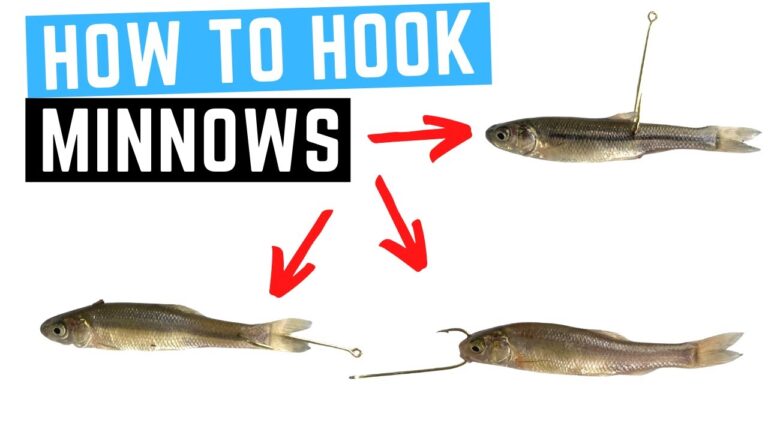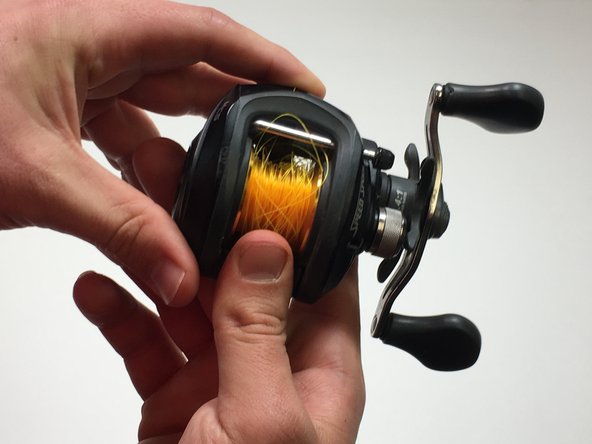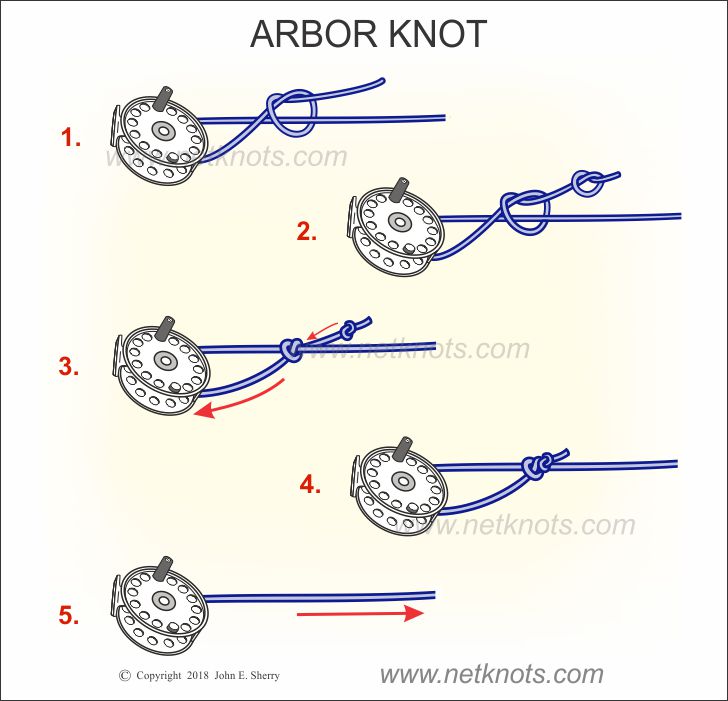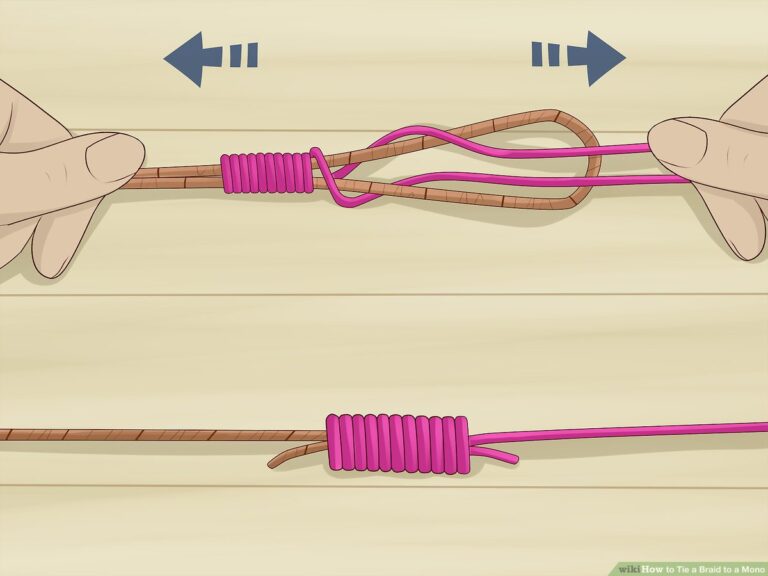How to Tie a Fishing Leader Line
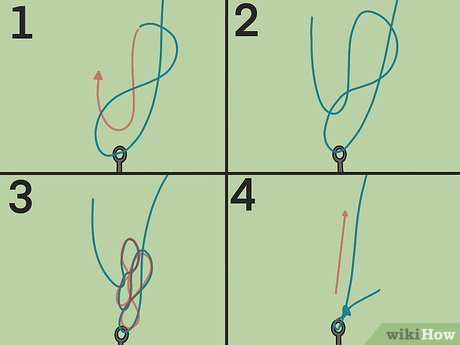
To tie a fishing leader line, first select a suitable knot, such as the Uni to Uni Knot. Begin by overlapping the ends of the leader and main lines for 6 inches.
Mastering the technique of tying a fishing leader line is essential for anglers to ensure a successful day by the water. The leader line serves as a critical connection between the main fishing line and the hook or lure, providing better bait presentation and protection from sharp-toothed fish.
Equipping oneself with the knowledge to properly tie a leader not only enhances the likelihood of a good catch but also minimizes the chances of losing fish due to line failure. Crafted for clarity and ease, this guide invites fishing enthusiasts of all levels to refine their skills and boost their confidence in preparing their fishing tackle. As you set out for your next fishing adventure, taking a moment to practice your knots could make all the difference between a trophy catch and a fishing story about the one that got away.

Credit: www.fishing-nc.com
Essential Gear For Tying Leader Lines
Choosing the right fishing line is critical for success in angling. Monofilament, fluorocarbon, and braided lines each have unique benefits. Monofilament is stretchy and forgiving, ideal for beginners. Fluorocarbon is nearly invisible underwater, making it perfect for clear waters. Braided line is strong and thin, providing excellent hook-setting power.
For tools to simplify the process, a good pair of scissors or a line cutter is essential. It ensures clean cuts for easy knot tying. A leader tying kit can also help. It often includes line clippers, swivels, and snaps. These tools speed up the process and improve the strength of connections.
| Type of Line | Best For | Tool Recommendation |
|---|---|---|
| Monofilament | Beginners | Scissors |
| Fluorocarbon | Clear Waters | Line Cutter |
| Braided | Hook-Setting Power | Leader Tying Kit |

Credit: www.wikihow.com
Understanding Leader Line Basics
Leader lines in fishing are crucial for catching bigger fish. They connect the main line to the lure or hook. Leaders are stronger and more resilient to damage. Fish with sharp teeth won’t easily cut through them. Thus, leaders prevent the loss of bait or fish.
Different fish need different types of leader lines. Saltwater species often require thicker and stronger leaders. Freshwater fish may need thin and clear leaders for stealth. Leaders also reduce the visibility of the main fishing line. This can increase your chances of a good catch.
| Leader Type | Main Use |
|---|---|
| Fluorocarbon | Clear water fishing |
| Monofilament | Topwater lures |
| Braided | Rough structures |
| Wire | Toothed fish |
Step-by-step Guide To Tying A Leader Line
Measuring the Leader Length is essential for a successful fishing trip. Use a measuring tape to get the right length. The length depends on many factors including the type of fish and water clarity. For clear water, a longer leader is best. Leader lengths typically range from 18 inches to more than 10 feet.
Selecting the Knot for Tying depends on personal preference and experience. The Improved Clinch Knot and the Palomar Knot are popular choices. These knots are strong and easy to tie. They work well for attaching the leader line to the hook or lure.
- Cut your leader line to the desired length.
- Thread the line through the hook’s eye.
- Twist the line around itself 5-7 times.
- Pass the line’s end through the loop near the hook’s eye.
- Bring the end through the bigger loop you just created.
- Pull the line to tighten the knot against the hook’s eye.
- Trim any excess line from the end.
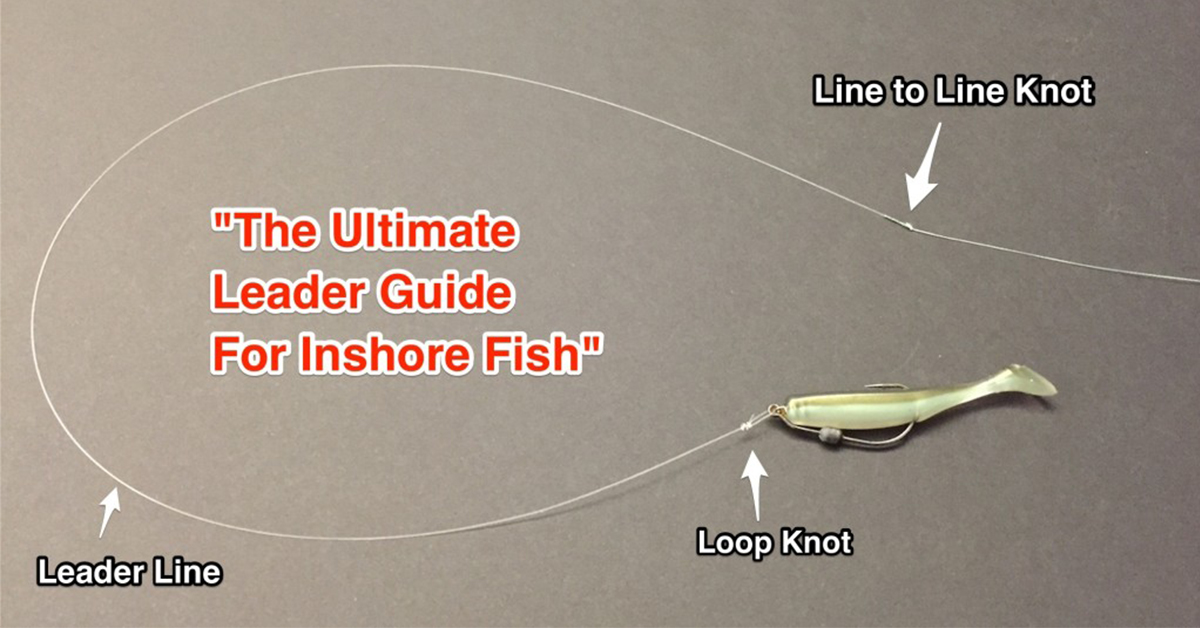
Credit: www.saltstrong.com
Common Knots For Leader Lines
The Improved Clinch Knot stands as a popular choice for its strength and simplicity. Anglers favor this knot for its reliability in holding the lure or hook. Start by threading the line through the hook’s eye, then wrap it around the standing line five to seven times. Next, pass the end through the small loop near the eye, followed by the larger loop just created. Moisten the line, pull it tight, and trim the excess.
Double Surgeon’s Loop is another easy-to-tie option which creates a strong loop at the end of the leader. Simply double over the line to form a loop, then make an overhand knot, passing the loop through once more. Pull the knot tight after lubricating it with saliva or water for best results.
The Albright Knot is exceptional for connecting two lines of different diameters. Bend the thicker line into a loop and run the lighter line through it. Wrap it around the loop and the line standing part ten times. Then pass the end back through the loop and pull the knot while keeping it moist. Ensure the coils are neat and trim any excess line for a clean finish.
Troubleshooting Common Issues
Knot failure often frustrates anglers. Always check your knots strength before casting. A slipping knot signals it’s tied wrong. To fix it, re-tie the knot slowly. Ensure each turn is snug against the other. Moistening the line can reduce friction. Try different knots like the Improved Clinch or Palomar for better hold.
Changing fishing conditions demand line adjustments. Strong currents might need heavier leaders. For clear waters, use a lighter and less visible line. Match your leader line with the water conditions and target fish species. Test different line strengths and materials to find the best match. Success lies in adapting your leader line effectively.
Advanced Techniques And Tips
Customizing your leader line for different fish is key. Use thicker lines for larger species. They resist stronger pulls. Smaller fish require thinner, less visible lines. This helps trick the smart ones. Remember, the right length matters. Longer leaders are better in clear water, where fish are wary.
Caring for your leader line extends its life. Rinse in fresh water after each use. This removes salt and dirt. Store it straight or loosely coiled. This avoids kinks and twists. Check for nicks or frays regularly. A damaged line can break during a crucial catch. Replace it when needed to maintain strength and performance.
Frequently Asked Questions Of How To Tie A Fishing Leader Line
How Do You Tie A Leader Line For Fishing?
Select a suitable knot, such as the Double Uni Knot or Surgeon’s Knot. Thread the leader line to the main line, overlap them, and loop each line around the other multiple times. Pull lines tight, ensuring knots are secure, and trim excess from the ends.
How Do You Tie A Looped Leader To The Main Line?
To tie a looped leader to the main line, use the loop-to-loop connection method. Simply pass the leader’s loop through the main line loop, then pull the entire leader through its own loop to secure. This knot provides a strong, reliable attachment that’s also quick to tie.
What Knot Do You Tie A Leader To Braid?
To tie a leader to braid, use the Double Uni Knot or the FG Knot for a strong and reliable connection. Both knots maintain strength and have a low profile.
How Do You Tie A Leader On A Reel?
Thread the line through the reel’s guides. Secure the line to the spool with an arbor knot. Attach the leader with a double uni knot for strength and ease. Trim excess. Ensure knots are tight and tested for durability before use.
Conclusion
Mastering the art of tying a fishing leader line enhances your angling skills and can lead to more successful catches. With practice, these knots become second nature, securing your line even in choppy waters. Remember, a sturdy leader line means the difference between a trophy catch and a fish tale.
Tight lines and happy fishing!
